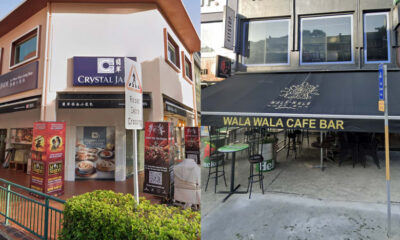World
Foreigners to Use QR Codes for Swift Immigration in Malaysia

Starting from September 22, 2023, foreign travelers, including Singaporeans, can clear immigration at Johor’s land checkpoints using QR codes, eliminating the need to present their passports. This initiative, announced by Malaysia’s Home Ministry, is part of a pilot program for the National Integrated Immigration System (NIISe) that will last until February 28, 2026.
The Home Ministry’s statement noted that the public, especially foreign nationals, is encouraged to download the MyNIISe app for streamlined entry and exit during this trial phase. While QR codes will simplify the process, travelers must still carry their passports and other relevant documents, as mandated by Malaysian law.
Implementation and Features of the NIISe System
The NIISe trial will also roll out in phases at various major airports across Malaysia, including Kuala Lumpur International Airport Terminals 1 and 2, as well as locations in Penang, Kota Kinabalu, and Kuching. The app aims to enhance the immigration experience by allowing users to register for group travel with a single QR code, a notable improvement from the previous MyBorderPass application, which required individual codes for each traveler.
In a statement made in July, Saifuddin Nasution, Malaysia’s Home Minister, revealed that the NIISe system is designed to accommodate travelers from 63 countries and territories, including China, the United States, Japan, and Australia. He emphasized that artificial intelligence will play a critical role in refining detection and screening processes at entry points. This includes an automated biometric identification system that utilizes facial, fingerprint, and iris recognition technology.
The NIISe project is set to replace the existing Malaysian Immigration System (MyIMMs), which has been in operation for over two decades. The MyNIISe app is available for download on the Apple App Store, Google Play Store, and Huawei App Gallery.
Operational Efficiency and Future Prospects
Saifuddin noted that the new QR code immigration system is expected to reduce the required number of immigration officers at counters by nearly 60 percent, allowing for their redeployment to other duties. Despite the launch of NIISe, travelers will still have the option to use the MyBorderPass application for immigration clearance. Since its trial began in January 2023, 786,603 Malaysians have downloaded the MyBorderPass app.
Singapore had previously implemented a similar QR code immigration clearance system at its land checkpoints with Johor on March 19, 2022. Motorists have reported that this system has significantly reduced their travel times. In Singapore, travelers can utilize the MyICA app, linked to their passports, although a physical passport remains necessary for first-time visitors and those re-entering the country on a different passport.
The introduction of QR code immigration clearance in Malaysia marks a significant step towards modernizing the country’s immigration procedures, enhancing efficiency for both citizens and foreign visitors alike.
-

 Lifestyle3 months ago
Lifestyle3 months agoHumanism Camp Engages 250 Youths in Summer Fest 2025
-

 Sports3 months ago
Sports3 months agoDe Minaur Triumphs at Washington Open After Thrilling Comeback
-

 Business4 months ago
Business4 months agoKenvue Dismisses CEO Thibaut Mongon as Strategic Review Advances
-

 Sports4 months ago
Sports4 months agoTupou and Daugunu Join First Nations Squad for Lions Clash
-

 Top Stories4 months ago
Top Stories4 months agoColombian Senator Miguel Uribe Shows Signs of Recovery After Attack
-

 World4 months ago
World4 months agoASEAN Gears Up for Historic Joint Meeting of Foreign and Economic Ministers
-

 Business4 months ago
Business4 months agoOil Prices Surge Following New EU Sanctions on Russia
-

 Health3 months ago
Health3 months agoNew Study Challenges Assumptions About Aging and Inflammation
-

 Entertainment3 months ago
Entertainment3 months agoDetaşe-Sabah Violin Ensemble Captivates at Gabala Music Festival
-

 Entertainment3 months ago
Entertainment3 months agoBaku Metro Extends Hours for Justin Timberlake Concert
-

 Business4 months ago
Business4 months agoU.S. House Approves Stablecoin Bill, Sends to Trump for Signature
-

 Top Stories4 months ago
Top Stories4 months agoRethinking Singapore’s F&B Regulations Amid Business Closures









